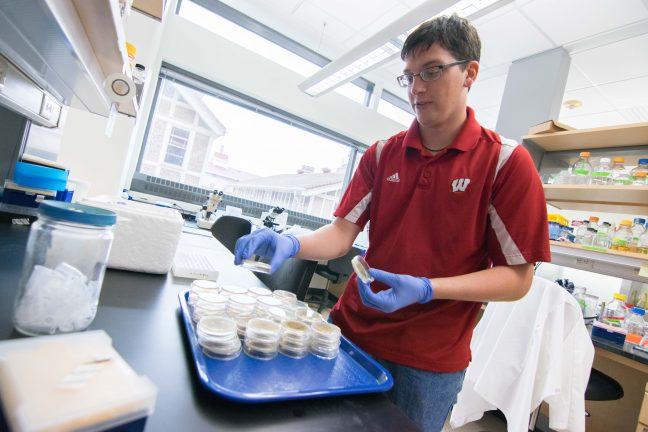For the last 50-odd years, there have been monumental advancements in science and science fiction. Many people, myself included, were drawn to science through science fiction in its numerous forms. Some of the most highly anticipated franchises such as “Star Wars,” “The Avengers” and “Star Trek” have had their narratives stuck in the advancements of technology. The University of Wisconsin’s own Wisconsin Science Festival is capitalizing on that influence.
When signing up for classes, most students tend to think of science and the arts as separate fields, but this year the Wisconsin Science Festival aims to emphasize just how important the arts are to science and vice versa. The broader focus of the festival is to get students involved in everything from stargazing to trivia. But the most anticipated event is a panel on the science of “Star Wars.”
Moving to link science to arts and entertainment is a wise move. Star Wars averaged about a quarter of a billion dollars per movie released and adjusting for inflation, “Star Wars: The Force Awakens” is the second highest grossing film in the franchise, so it’s safe to say our generation is a fan.
There’s even evidence that entertainment has influenced past generations on choosing to go into science based on their love of a franchise. Aside from “Star Wars,” “Star Trek” is perhaps the largest cultural influence in terms of effecting advancements in science as well as a significant reason for people to major in STEM fields. The fact that the Wisconsin Science Festival is acknowledging and utilizing entertainment’s value is beneficial for us as students as well as the festival itself.
For many people, science can be difficult to understand and hard to keep up with. That’s why it’s important not only to focus on the broad categories of science like biology and engineering, but to also focus on some of the more artistic uses in the realms of theater, dance and film. Advancements in special effects and animation are also areas of scientific improvement in terms of software that are of interest to all ages and can be useful in drawing in younger crowds who may be interested in how their favorite characters are created for television.
As for how “Star Wars” has contributed to science, it has made impacts on everything from special effects to visualizing the conditions on other planets. Director George Lucas revolutionized the entertainment industry by pushing special effects to create whole cities, spaceships and characters. By mixing CGI with the costuming and set departments, Lucas was able to create a sense of realism that some movies have yet to match.
In addition, by using special effects to illustrate certain aspects of science such as a binary sunset, Lucas gave an image to the discoveries that scientists had made so that the public could experience the grandeur of space.
UW is home to many interesting researchers who are making great contributions to their fields, and it’s important to remember that to get people active they must be interested. Personally, I know several UW alumni who got together weekly to watch episodes of “Star Trek.” Each of them went into fields pertaining to engineering and were thankful for entertainment introducing them to the excitement and ingenuity of science.
I also know elementary and middle school children who love Tony Stark and see him as a role model for inventing awesome technology. For the festival to incorporate “Star Wars” and show how intrinsic science is to other fields may just change how some students think about elements of dance and theater.
For example, there are those who would not immediately see the benefits of linking dance and science together. But there has been a lot of research into supporting dancers’ health, which has drastically impacted the landscape. Some scientists are concerned with helping dancers lower health risks, such as straining muscles or avoiding sprains from complex moves. In addition, science can make dance more efficient. Studying the physics of dance can help dancers be able to leap higher and longer, among other potential benefits.
As for theater, not only can science be taught through engaging stories and plays, but complex set pieces, such as the spinning stage used in Hamilton, and other theatrical effects require advanced physics and engineering.
For all of the good that science has lent to the arts, the arts have made just as big of a contribution, and I’m glad that the Wisconsin Science Festival is highlighting those impacts this weekend. I hope that many students will venture out and enjoy the events this weekend. If you’ve never been, now is your chance to boldly go so that others can pass on what they have learned.
Ashley Petersen (apetersen@wisc.edu) is a junior studying communications.


